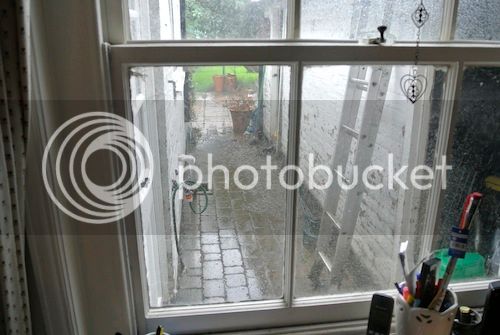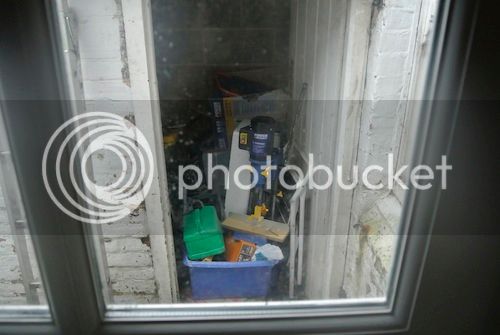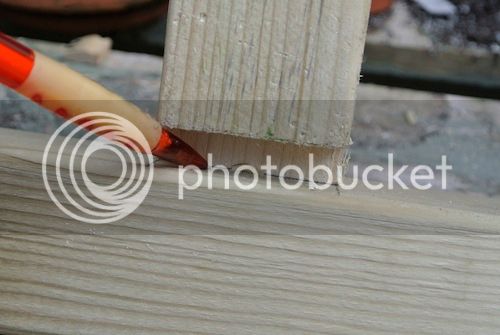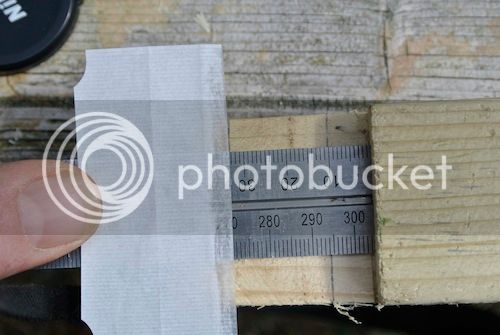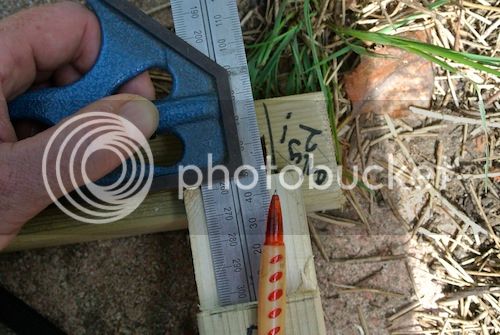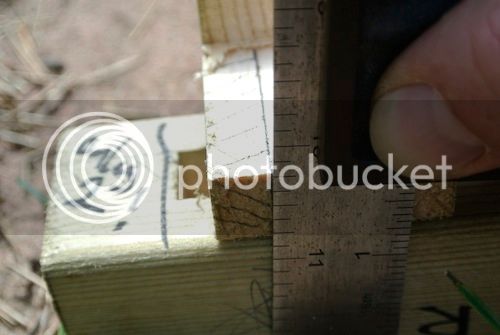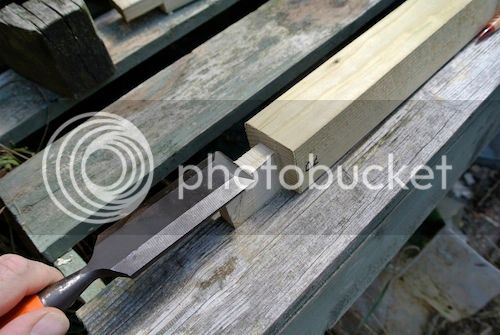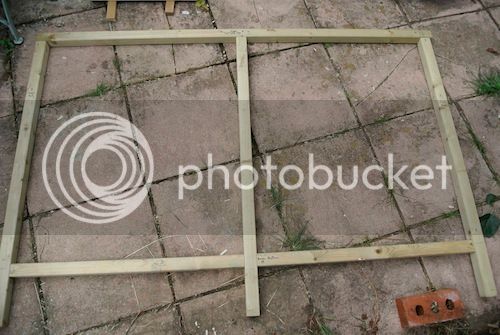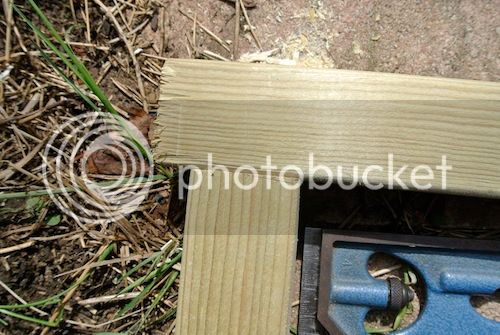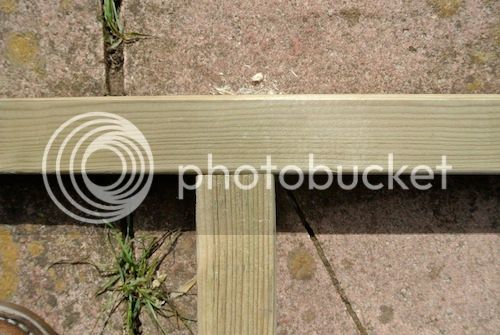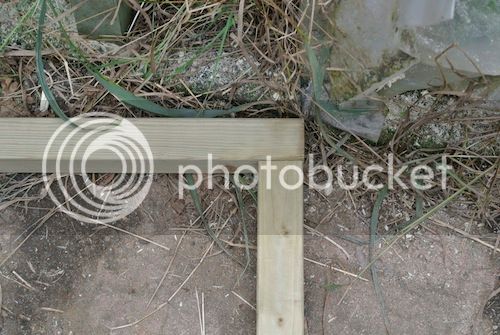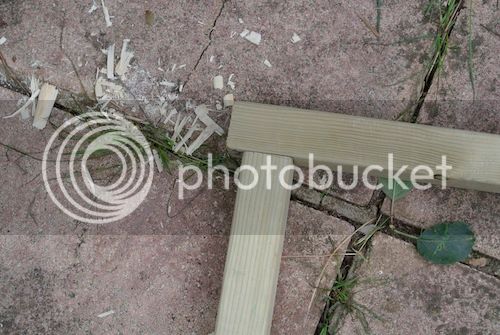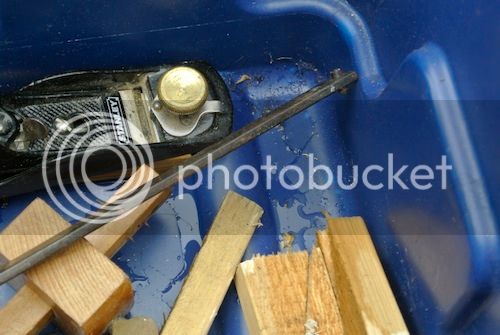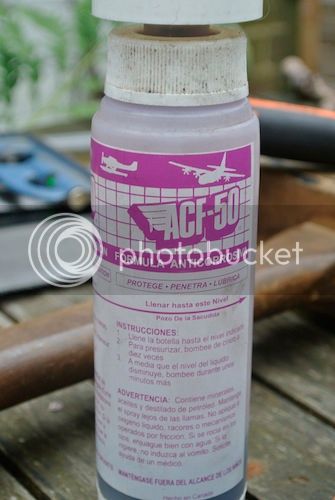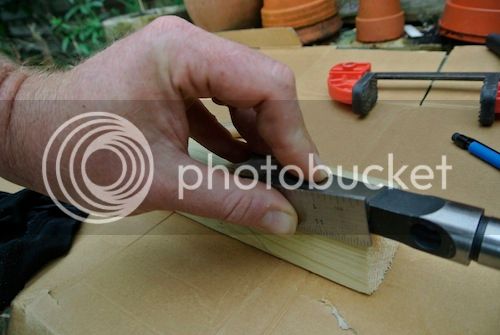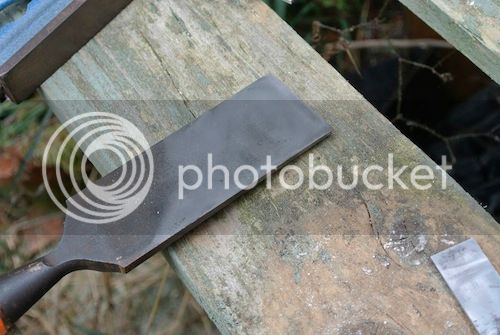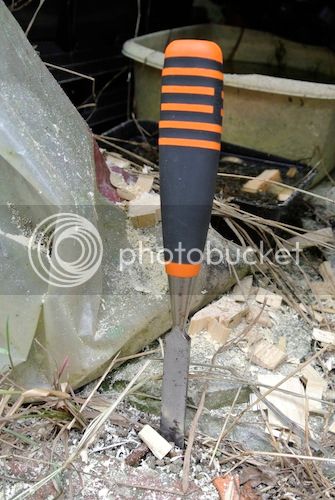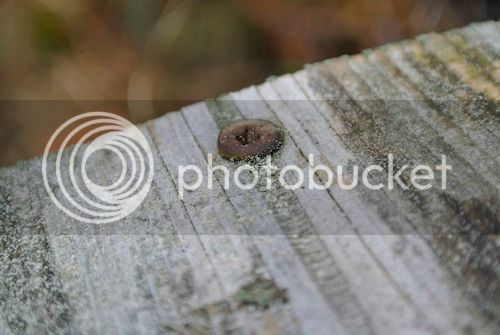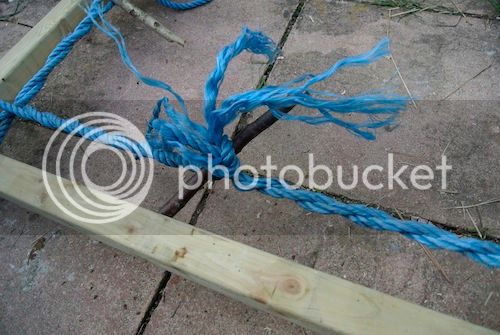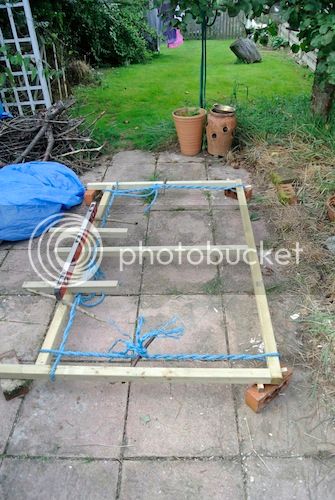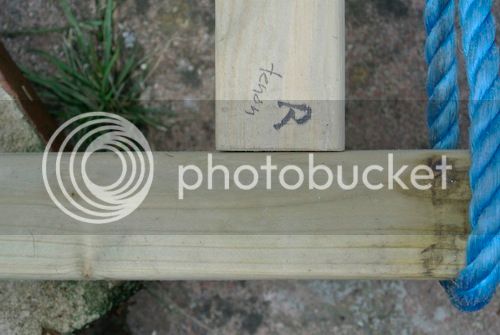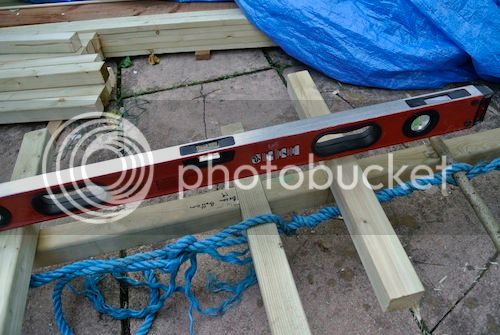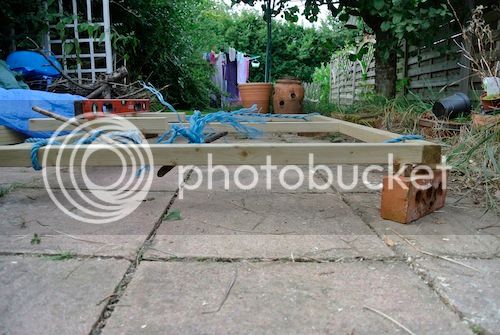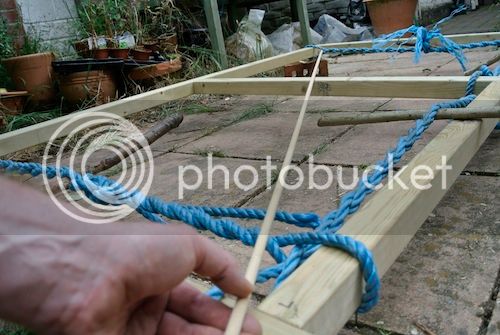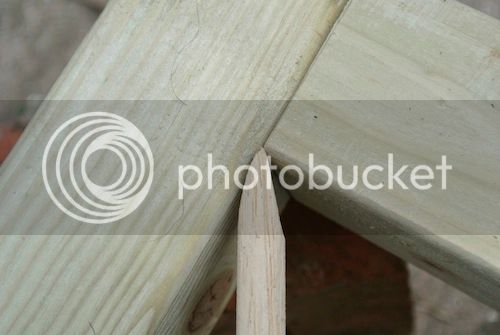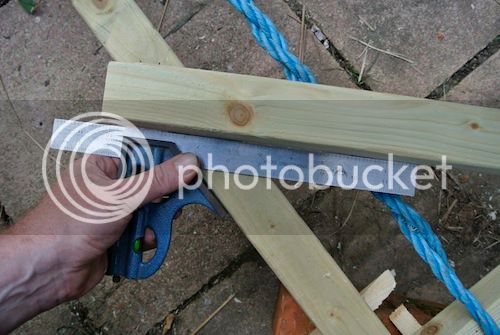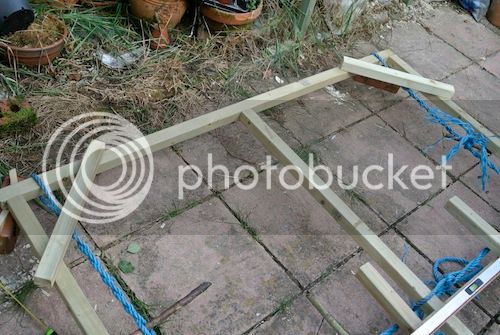In my last post I’d got to the bit where the braces were cramped to the corners, (we could always start an argument now about whether I’d clamped ‘em or cramped ‘em, that’s why I think it’s easier to put a brick on top instead! I started with a pair of “handy clamps”, but I’m not sure now).
I’m noticing that the timber’s started moving about a bit now and it’s got me scratching my head a lot, as to how to cut the joints to minimise the gaps. As it’s a pegged job I can’t use the “cascamite-and-sawdust-inlay system”. Speaking of which, here’s a job I did a few years back, where I think the inlay shows the hand-cut dove-tails to fine advantage!;
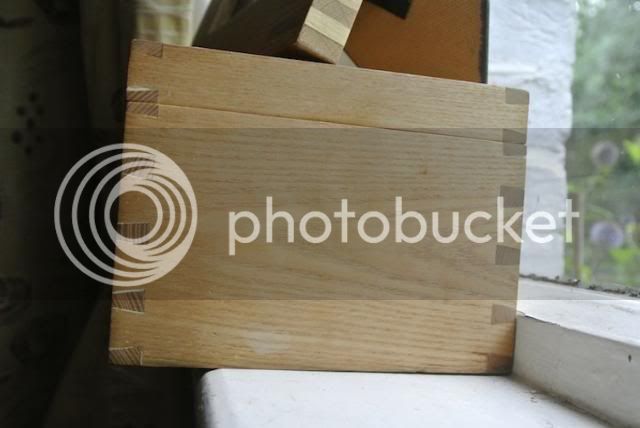
I’m sure there’d be a proper way of doing this framing malarky, but as you’re probably aware by now, I’m making this up as I go along! (The labourer down the wood-yard is the only person to notice this, but as his timber selection method is “Now then, I fink them bits at the top of the pile are wot he really wants”, I’m not sure I’d trust his wisdom completely. However, I suppose if I were hefting wood around all day myself, I couldn’t fault his logic. I’ll have to ask him if he’s an Aristotelian or a Boolean next time I’m down there!)
Enough digression (I told you love, it’s my gress not yours!).
Having marked the rear of the frames for the positions of where the braces would be, I used the square to mark down onto the “inside” of post and beam, for the end of the mortices. I tried to mark under the braces for the “shoulders” of the tenons, but this was tricky as it’s all so close to the floor and tried to square up the sides of the braces. I don’t think using the square was ideal here, I would suppose using a chalked plumb line would be better, particularly if it was much bigger. I’m having difficulty remembering which bits should be “scribed” and which bits would be “plumb(ed)”. Anyway, it’ll all come out in the wash, I’m hoping a little bit of wooden “shim” and a plane will cover up some of the bigger mistakes. (I’ll park a chair in front of the biggest mistakes!).
I then compared one brace to the other, to see if they were similar enough to be right. Doing this helped me notice the slight “mistake”, that when setting them out, I’d measured down from the top of the frame for one brace and the inside of the frame for the other!!! Luckily as I hadn’t applied the saw, I could fix that with a rubber and a new scribble, luckily I had a rubber in the tool box (strangely enough my big brother always carried his in his wallet, he says if you put it there you wouldn’t make mistakes! I really should’ve listened to his advice when I was younger!). This is comparing the two braces after I’d re-scribbled;
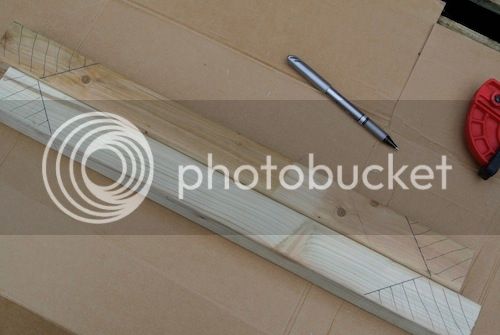
You might notice that there’s about ½ inch difference between the two. This could be down to the irregularities in the wood, or probably I’ve just cacked up again. As it is, they’re nearly six foot apart so who’s going to notice? It’ll only be ¼” when they’re in place anyway.
Nextly; Cutting the tenons. Due to the angle of the brace, I found there was a lot of wood to rip through, but I only needed to come in from one side as the shoulders were at 45%. Here I found the sawing was getting hard, possibly because the “grain” was curling the wood in, but I dare say that I might not have a good technique yet!; Anyway, I had a bright idea, so I popped in, found the wife’s best candle and rubbed it all over the blade;

This seemed to do the trick as the sawing got easier. You’ll probably need to use the missus’ best candle as I’m sure the wax’ll be better! She won’t mind surely? I think, if your blade is straight and you know what you’re doing you won’t need the wax. Plus, if you’re going to be gluing the tenons, the wax would cause a lot of problems. Luckily, I’m going to be using pegs, and the wax’ll help waterproof the joint!!!
Et Veolia (as the Bin-men say in France); two part-finished braces;

I used to think you’d cut the mortices into the posts at 45 degrees for braces, but apparently not, it’s probably too fiddly and not necessary, plus I think you’d never get the thing together during assembly. I’m hoping I’ve got this next bit right. I marked the tenon, back 45 degrees on the longest edge of the brace;
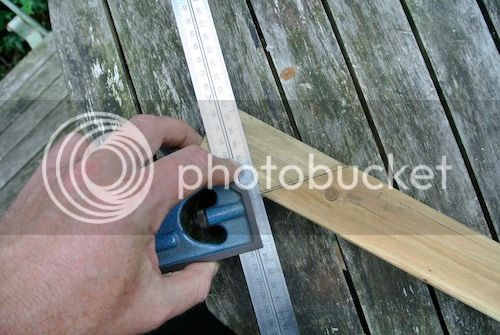
….and chopped the end off (too late to go back now!). This should mean that the tenon will slide in square to the face of the beam/post. Then I laid them out on the posts with the LI just to see what other mistakes I’d made;
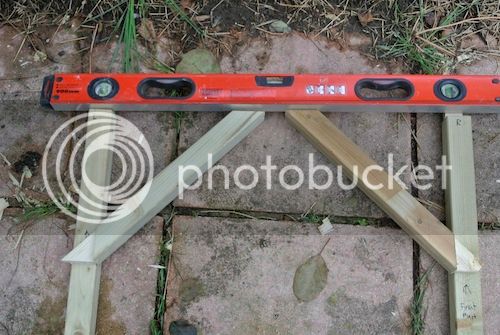
So far so good, but looking at the twist I’d cut in the Tenon!!! You’d think I was a “prop-maker” for Sopwiths. Never mind, a sharp chisel and wooden-shim’ll sort that out.
If you chop the mortice full depth along its length, there’ll be a big gap inside the mortice when the joint’s done up, so if you’re handy with a chisel I’m sure you could cut one end of the mortice at 45 degrees. Personally I think Father O’Reilly might need somewhere to hide his Bushmills when his mates pop round and he might need somewhere for his mates if the “roundheads” come round, so I’ve left some big “holes”! I might try something different on the back frame.
Next I BRRR-GRAUNCH-WHIRRED the mortices, shaved their edges, popped the braces in the holes, marked the depth of the tenons, sawed a bit more kindling off and “Hey Presto” (I think Presto became Safeway actually!);
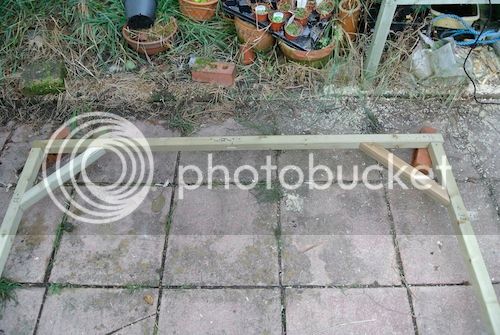

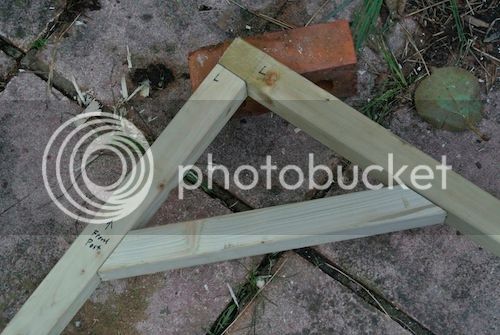
Job Done!! I’ll not make you jealous by showing you close-ups of the braces and how flush they are to the front face……still, nothing that a quick wipe across with a plane won’t settle!!!
See you later, I’ve been blathering on when I should be drilling some holes for the pegs today!!!
Oh look! The apprentice has popped round for a hob-nob or two; look at him, lying down on the job, as usual;

This is when I’d just told him “look Sonny, none of your cheek! I’ve forgotten more about carpentry than you’ll ever know”. “Izzat so gran’dad I wish you’d remembered some of it when you was tryin’ to teach me!!!” he said back. I don’t know, the Yoof of today eh!!
We were never like that, were we?


